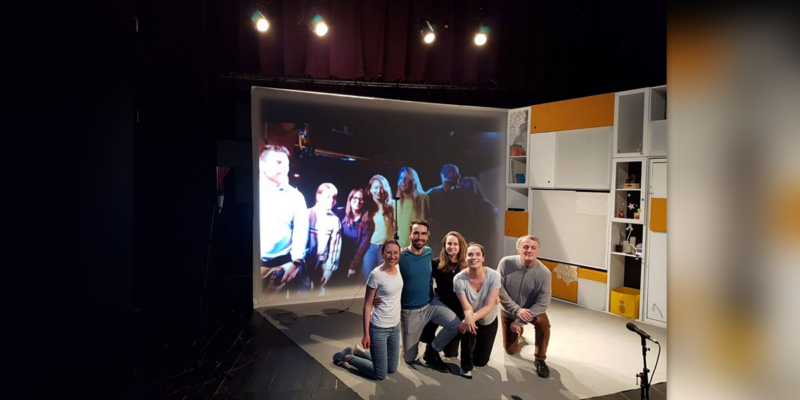The Evolution of Videoconferencing

Many years ago, I worked for a facilities-based CLEC selling POTS (plain old telephone services), DSL, T1 (1.5 Mbps), bonded T1 lines (3 Mbps), phone systems and VoIP (voice-over-IP) solutions. This experience helped me to really understand the business criticality of quality-of-service internet bandwidth and continues to help me to this day.
After IT/telecom, I worked for a leading video managed-services company, which I did not join until two things occurred:
- I decided to accept their offer in 2008, right after my older daughter received her first Mac laptop, set it up and made a video call to her friend in only a few minutes (ease of video technology usage).
- And (separately) HD video codecs and HD commercial displays became more widespread. I had seen their services initially supporting SD calls and was not impressed with the cameras and commercial displays; HD clearly was going to be the new norm. (By the way, one of the first commercial video conference product companies was PictureTel Corporation which Polycom purchased in October 2001.)
So, I joined in 2008. Over the next five years, I was on many video calls (from one of our three domestic offices or primarily from home) and/or met on-site with various global enterprise and broadcast companies that used telepresence systems and video codecs from several different manufacturers such as Cisco, HP, Lifesize, Polycom, Radvision, Tandberg, Teleris and Yamaha (yes, the company that also manufactured my father’s old yellow motorcycle that I used to ride around — and around and around — the house).
Telepresence rooms actually included entire environments, such as a specially designed table; chairs in strategic locations (up to 18 depending on the configuration of the system); tiers of floors to enable additional seating, like a theater; lighting grid; certain colored walls; high-end mics with mute and unmute features spaced out on the table(s) speaker system; QoS Bandwidth (at least 2Mbps/camera); and a small team to manage each video call (internal and/or external, as my bridging team provided support for each site’s connection). Special equipment was required for interoperability to connect disparate telepresence systems and video codecs together.
I actually set up one of the first interop video calls that included a Cisco Telepresence system, a Polycom Telepresence System and a Sony PC-1 video codec from three different networks using expensive bridging equipment from Tata Communications that we had in our data closet in our NOC. I had to coordinate with several people, as my goal was to prove to some of our clients and my associates that this could be done, and we did it.
The intention of using the telepresence system was to enter the room, sit down and start your meeting without having to touch any devices (other than moving your chair). If one system called another system, it was a point-to-point video call. If more than two rooms (aka endpoints) were connected, it was a multipoint call that required a bridge (another piece of equipment) and more bandwidth.
At that time, only large enterprises could afford these environments, and initially, only the C-level executives would participate in these meetings, but they were very effective. In fact, I sold my service to a broadcast network with three telepresence systems and, true story: The network’s CEO would have my bridging producers focus the cameras onto the eyeballs of each person at the far endpoint so he could tell if his associates were telling the truth.
An industry expert described some benefits of telepresence: “There were four drivers for our decision to do more business over video and telepresence. We wanted to reduce our travel spend, reduce our carbon footprint and environmental impact, improve our employees’ work/life balance, and improve employee productivity.”
Rather than traveling great distances to have a face-face meeting, it is now (was) commonplace to use a telepresence system instead, which uses a multiple codec video system (which is what the word “telepresence” most currently represents). Each member/party of the meeting uses a telepresence room to “dial in” and can see/talk to every other member on the displays as if they were in the same room (i.e., sitting at the far end of the table). This brings enormous time and cost benefits. It is also superior to phone conferencing (except in cost), as the visual aspect greatly enhances communications, allowing for perceptions of facial expressions and other body languages.
Example: CTS 3000 — Room system for six persons

“Cisco Telepresence” by Tom Raftery is licensed with CC BY-NC-SA 2.0. To view a copy of this license, visit https://creativecommons.org/licenses/by-nc-sa/2.0/
Specifically, the CTS 3000 included the following:
- One Cisco Telepresence primary codec
- Two Cisco Telepresence secondary codecs
- One Cisco Unified 7975G IP Phone
- Three 65-inch plasma displays
- Three high-definition cameras
- Three microphones
- Three speakers
- One input for auxiliary video that you can use for a document camera or PC
When discussing the value of videoconferencing, I used to say, “Your first meeting should be in person, and meetings two through infinity should be over video.” The efficiency of on-site meetings could potentially be 100%; telepresence 80-90%, HD videoconferencing 70-80%, audio conferencing 10-20%, email and/or texting 5-10% (even today, how many emails or texts do you need to send to get complete answers to your questions?). After two emails or texts, pick up the phone (at least) or set up a brief video call (preferable) to communicate more effectively.
As many companies starting embracing HD videoconferencing, stand-alone hardware video codecs/cameras took over conference rooms. (This happened along with table microphones with ceiling speakers or ceiling mic/speaker array systems.) External HD webcams with an embedded mic/speaker became commonplace — they started coming connected to the top of computer screens and/or laptops (also with embedded camera/mic/speaker) at each person’s desk (work and home).
Eventually, companies (such as Logitech, as just one example) very successfully bundled videoconference systems with cameras, mics and speakers, which connected to displays in conference rooms, multipurpose rooms and boardrooms (lots of rooms). UC became a new marketing term and business case strategy utilizing audio, video, chat, content sharing and other components to communicate to each other efficiently and effectively (point to point or in a multipoint call).
Many companies eventually migrated from on-prem solutions to cloud-based services as the cloud became more secure and more user-friendly than on-prem-based systems. The videoconferencing software (aka software or soft clients) adopted by many companies was initially used on Windows OS computers. Examples include (over the past 10-plus years): BlueJeans, GoToMeeting, Google Meet, Jabber, Movi, Pexip, RealPresence, RingCentral, Skype, Webex, MS Teams, Zoom and others. (There were and still are many different platforms in use.) The new communication term became VMR or a Virtual Meeting Room (formerly a multipoint call).
The latest mobile collaboration systems combine video, audio and on-screen drawing capabilities using the newest generation of handheld mobile devices to enable multiparty conferencing in real-time, independent of location. Benefits include cost efficiencies resulting from accelerated problem resolution, reductions in downtimes and travel, improvements in customer service and increased productivity. Signal strength, rather than wired bandwidth, has become the latest critical requirement.
Thank you for your time; I hope we can meet over video or eventually in person. I must go, my mom is calling me from her wristwatch.
Here is my latest iteration of helpful industry terms.





